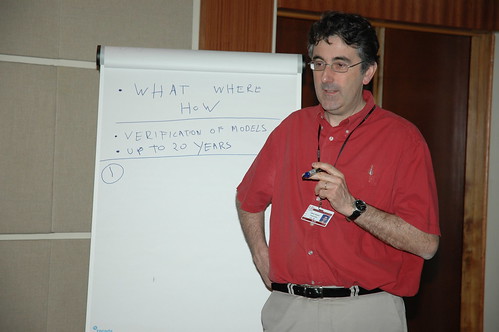Steve Kemp, a geneticist at the Nairobi laboratories of the International Livestock Research Institute (ILRI) for both ILRI and the University of Liverpool, argues in this short video (2:24 minutes) the new opportunities — as well as urgent need — for exploring the remarkably rich livestock diversity that evolved and still exists on the highly diverse African continent.
‘We need to study the genetics of the animals,’ he says, as well as ‘the farming systems in which they are being used and their production characteristics. And that has never been done systematically in situ across this extraordinary diversity of African livestock.’ Kemp describes fast-improving technologies in the ‘new genetics’ — technologies that are allowing scientists, for the first time, to attempt these very broad kinds of genetic analyses. And he makes a case for establishing livestock genebanks to help preserve the continent’s livestock diversity, which is rapidly being lost. ‘Unless you move relatively quickly,’ warns Kemp, ‘there’ll be nothing left to study.’ Kemp makes these points in an article published in a June 2010 issue of the international journal Science. The co-authors of the article are Tadelle Dessie, an ILRI livestock breeding specialist based at ILRI’s campus in Addis Ababa, Ethiopia, and Olivier Hanotte, a geneticist that formerly worked at ILRI and now directs a Frozen Ark initiative at the University of Nottingham, in the UK. Although genebanks are an important ‘stop-gap’ for preserving livestock diversity, says Kemp, his article makes the point that ‘at the same time that you bank, you must understand the characteristics of what you’re preserving.' 'ILRI is well positioned to catalyze this kind of research,’ Kemp says. ‘It has strong links with Africa and with African partners, who have access to the livestock. It has the mix of skills it needs to understand the function of livestock, right across the spectrum from disease resistance to their role in the marketplace. And it also has the technology — the molecular tools and the informatics tools — to allow us to begin this process.’ ‘But ILRI cannot perform any of this analysis alone,’ warns Kemp. ‘It needs to network with partners in the West and across Africa.’
Science: 'Time to tap Africa's livestock genomes', 25 Jun 2010
BBC News: 'African livestock offers untapped genetic resource', 24 Jun 2010

